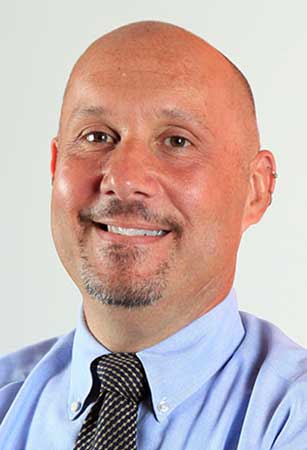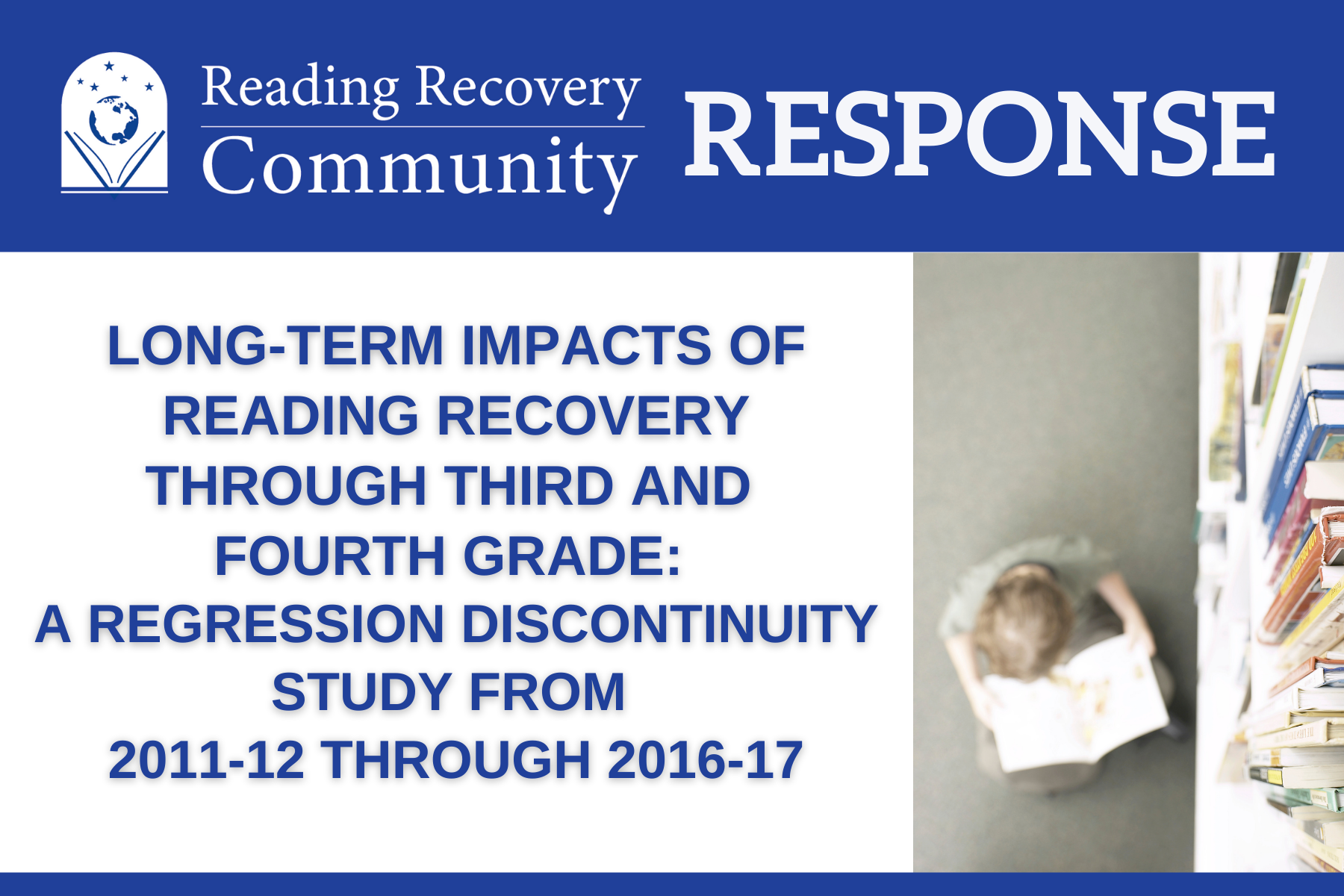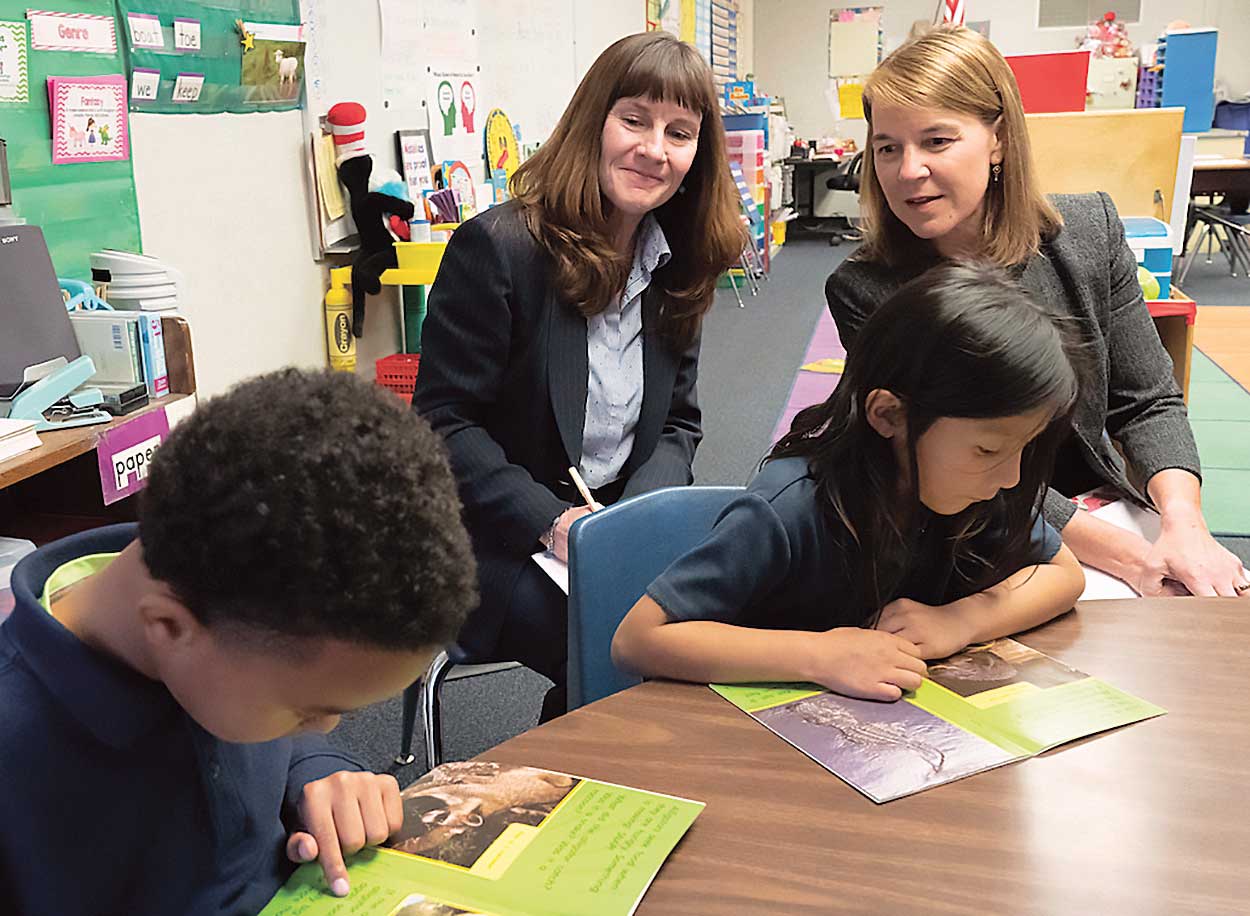Leveraging the Teacher Leader’s Expertise as a Coach and Provider of Professional Development, Part 1
by Adria Klein and Deb Rich, Trainers, Saint Mary’s College of California
As Trainers, we collaborate in planning our classes and support ongoing professional development with Teacher Leaders and Teachers. With a combined 33 years of experience training Teacher Leaders and even more working in schools, including both our experiences as former Reading Recovery Teachers, we have thought deeply about the power of Reading Recovery as a systemic approach. As we began drafting this blog, five factors influenced our thinking: Strength of the Professional Development Model, Collective Professional Knowledge, Dexterity and Deliberateness, Communication, and Complex Theory of Literacy Processing for Older Students. We researched these areas and found many references by Clay and others that expanded our understanding. In this blog, we will address the first two points and will continue with the discussion in the next blog.
Strength of the Professional Development Model
The seminal research of Linda Darling-Hammond, specifically around Reading Recovery as a professional development model, has influenced our efforts. The quotes from her work that follow identified seven key factors of effectiveness:
Specifically, [Learning Policy Institute] found that it:
- Is content focused
- Incorporates active learning utilizing adult learning theory
- Supports collaboration, typically in job-embedded contexts
- Uses models and modeling of effective practice
- Provides coaching and expert support
- Offers opportunities for feedback and reflection
- Is of sustained duration
The Reading Recovery program… is an example of one program that possesses all seven elements and has been found to generate positive student gains.
Darling-Hammond, et al., 2017, p. 4
These findings suggest that the Reading Recovery PD program is capable of positively impacting student achievement on a large scale and can help drive equitable learning outcomes for ELL and rural students.
Darling-Hammond, et al., 2017, p. 5
Ideally, the PD is aligned with school and district priorities, providing a coherence for teachers, as opposed to having PD compete with differing school and district priorities.
Darling-Hammond, et al., 2017, p. 5
To prepare teachers to play this critical role, Reading Recovery provides intensive PD that incorporates all seven elements of effective PD.
Darling-Hammond, et al., 2017, p. 5
Gaffney and Anderson found an additional factor that was important to consider.
The two-tiered scaffold illustrates the integral, interactive relationship between the processes used to prepare experts and the method used to teach novices. Reading Recovery, a supplemental program for first-grade children who are at risk of reading failure, is presented as an instantiation of Vygotsky’s theoretical framework and is used to illustrate the two-tiered scaffolding model.
Gaffney & Anderson, 1991, p. 4
Clay said the following about the essential qualities of professional development provided by Teacher Leaders:
They need to be able to lead teachers into discussions of the ‘why’ questions but their personal challenge is to become more articulate about what they understand by the term ‘literacy processing’, the theory of reading and writing with which they work…. These discussions will relate to the psychological processes described in current models of reading and writing acquisition. They may deal with text meaning and comprehension; with direct and rapid access to known vocabulary prompted both by visual recognition and phonological learning; with problem-solving new texts using knowledge of any kind interactively (visual, phonological, word, syntactic, language, book knowledge and world knowledge); and with monitoring whether a ‘good fit’ of all information has been achieved, and if not, then operating error detecting and correcting strategies.
Clay, 2015, p. 232
Collective Professional Knowledge
The complex learning that is developed during professional development fosters collective professional knowledge of the teachers. The I3 report provides a wealth of research for this work.
…in schools exhibiting integration, communication between Reading Recovery teachers, classroom teachers, and administrators was not only about Reading Recovery students, but about literacy more broadly, and what contribution the program could make to increasing capacity for excellent literacy instruction across the school. In these schools, classroom teachers actively collaborated with Reading Recovery teachers, and used the understandings they developed through this collaboration to improve their classroom literacy instruction. Because the scope of communication extended beyond the Reading Recovery classroom and Reading Recovery students, classroom teachers understood not only what happened in Reading Recovery, but how they could parlay the program into school-wide improvement.
May, et al., 2016, p. 141
Through a shared vision, administrators, Reading Recovery Teacher Leaders, Reading Recovery Teachers, and classroom teachers in the Long Beach Unified School District in California collaborated to “accelerate teacher skill development and confidence, build collective efficacy, and increase rates of student success” throughout the district.…we believed that our Reading Recovery staff had the expertise, experience, and tenacity to support the implementation of an intervention system that broadened the impact of their work in schools.
Baker & Brown, p. 17
The Intensive Intervention Model includes three pillars summarized in Figure 1. Each pillar is considered critical to the model’s success…. In the LBUSD model, it is the coordination of services, the commitment to communication, and the acknowledgement that “we all have a job to do” that led to the model’s success.
Baker & Brown p. 18-19
In Summary
As Trainers and members of the Reading Recovery Professional Development community along with Teacher Leaders and Teachers, we explored the first two factors of five in this blog specifically and shared key quotes in this blog. The Reading Recovery Professional Development model utilizes well-prepared Teacher Leaders as district or regional coaches, based on Clay’s design for learning. What we are suggesting is that the Teacher Leader is an effective agent for systemic change across an entire district or region. Clay’s literacy processing theory is the foundation of our collective understanding; Teacher Leaders are key contributors to professional learning communities. Next time, we will address the topics of Dexterity and Deliberateness, Communication, and Complex Theory of Literacy Processing for Older Students.
References
Baker, J. & Brown, K. (2018). Broadening the sphere of influence: Reading Recovery as part of one district’s comprehensive intervention approach. Journal of Reading Recovery, 17(2), 17-23.
Clay, M. M. (2015). Change over time in children’s literacy development. Marie Clay Trust.
Gaffney, J. & Anderson. R. C. (1991, January). Two-tiered scaffolding: Congruent processes of teaching and learning. Technical Report 523. Washington DC: Office of Educational Research and Improvement.
Darling-Hammond, L., Hyler, M. E., Gardner, M. (2017). Effective Teacher Professional Development. Palo Alto, CA: Learning Policy Institute.
May, H., Sirinides, P., Gray, A., & Goldsworthy, H. (2016). Reading Recovery: An Evaluation of the Four-Year i3 Scale-Up. Philadelphia: Consortium for Policy Research in Education.




 Dr. Billy Molasso is the Executive Director of the Reading Recovery Council of North America.
Dr. Billy Molasso is the Executive Director of the Reading Recovery Council of North America.


